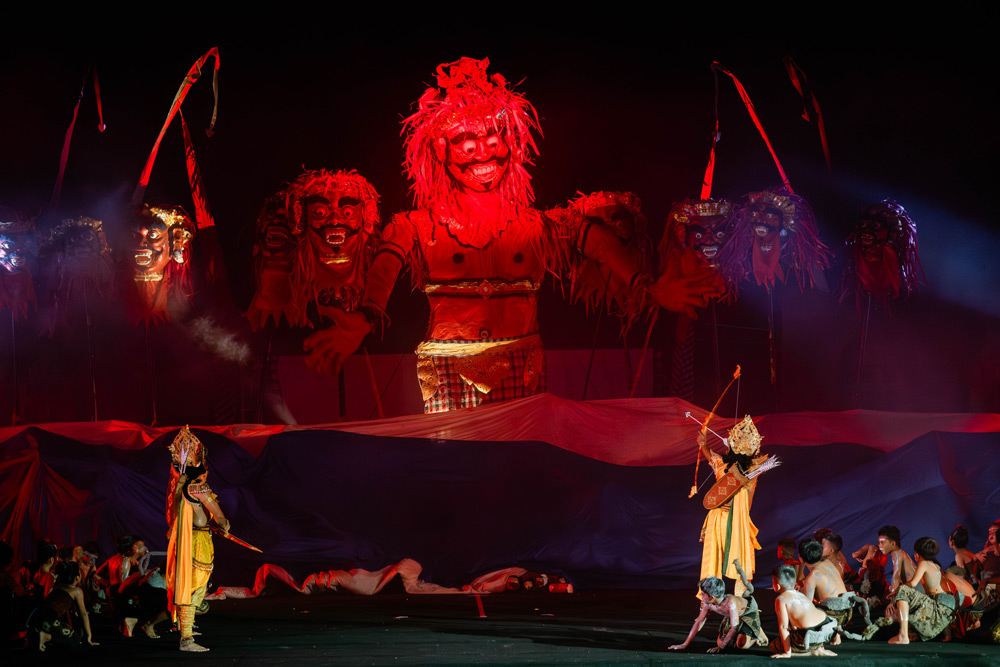
All photos courtesy of Sanggara Paripurna
In Bali, dance and theatre are, at their core, acts of devotion. Central is the veneration of ancestral and divine spirits, ritually invited to inhabit a wide array of temples: kinship-based, territorial, royal, and more.
Each temple marks its anniversary either every 210 days, following the Balinese pawukon calendar, or every Saka lunar year, especially in the case of agricultural temples. During these sacred celebrations, returning ancestors must be honoured—not only through offerings and prayers, but through music, movement, and dance. Dance, then, becomes a way to greet the unseen, to embody myth, and to renew the spiritual fabric of community life.
Over the past century, Balinese dance has undergone profound transformations. As Walter Spies described in his classic Dance and Drama in Bali, most traditional dances—apart from trance rituals like Sanghyang—were enactments of mythological tales. Dance served as an extension of sacred storytelling.
This began to shift in the 1930s with the advent of tourism. Under the influence of Spies and other foreign artists and scholars, new dances emerged: one that emphasised aesthetic form over narrative depth. Performances were shortened, stylised, and reimagined for seated foreign audiences—often staged outside their original village or palace contexts. These “excerpted” dances, though beautifully executed, were a far cry from the immersive, communal experience of temple ceremonies. This immersive experience was little by little replaced by that of the stage, with focus on choreography rather than communal sharing.
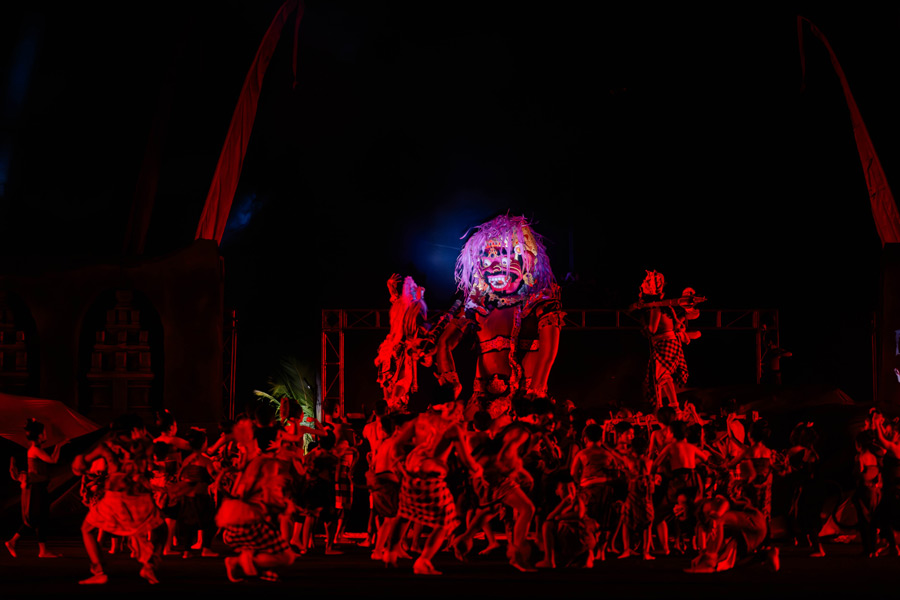
In the 1950s to 1960s, a fresh wave of creativity blossomed: the kreasi baru movement, or “new creations.” These short, modern dances—often performed by ensembles of young women—drew inspiration from everyday human activity, nature, and animal life. Though contemporary in theme, they preserved the bodily grammar of classical dance.
Later still, the Denpasar Arts Festival catalysed a revival of grand mythological performances. These large-scale productions, often involving hundreds of performers, returned to epic storytelling—drawing from the Indianised Balinese corpus of the Ramayana and Mahabharata—but on a scale suited to the urban audiences of modern Bali. They became both a celebration of Balinese cultural identity and a public affirmation of the island’s inexhaustible artistic vitality.
Today, Balinese dance has entered yet another novel phase. A striking development is underway: performers from village communities, now formally trained at urban institutions like the Denpasar Institute of the Arts, return to their roots with fresh eyes. They take up one or more genres from their village traditions and reimagine them—not merely as ritual offerings or displays of cultural pride, but as choreographed works bearing personal or social messages. These reinterpretations often form the centerpiece of their academic journey, presented as part of a master’s thesis or, increasingly, a doctoral dissertation. In so doing, they reappropriate tradition for contemporary expression.
Among the most fascinating examples of this evolution is the journey of Made Sidia, who recently reinvented the Ramayana in extraordinary fashion.
Though not a dancer, Made Sidia was born into the world of performance. He is the son of the famous dalang (puppet-master) Sadia, for decades an inspired maestro of Balinese shadow theatre. Growing up, Sidia was immersed in the sound of the gender wayang music, the intricate iconography of leather puppets—learning to distinguish heroes from villains, kings from commoners through their headdresses and facial features—and the Kawi language, through which the Balinese access their mythic past. The memorisation of the episodes of the Ramayana and Mahabharata came naturally, through assisting his father as a pengrombo during performances.

Yet, Sidia did not limit himself to continuing his father’s tradition. He pursued formal studies, graduating in 1992 with a degree in Balinese theatre (Pedalangan) from the State College of the Arts (STSI) Denpasar, where he later became a faculty member. He further developed the tradition by embracing Wayang Listrik (“electric puppetry”), an innovation initiated in the early 1990s through collaboration between American artist Larry Reed and Balinese puppeteer Wayan Wija. Wayang Listrik modernises traditional wayang, replacing oil lamps (blencong) and physical puppets with electric lights, projectors, and animated visuals, greatly expanding performative possibilities.
Sidia’s supple creativity soon caught wider attention. In 2010, Bali Safari Park invited him to direct a spectacular production, “Bali Agung: The Legend of Balinese Goddesses”—a show narrating the mythic romance between a Balinese king and a Chinese princess. As production director, Sidia created a breathtaking performance featuring over 150 Balinese dancers and musicians, blending shadow puppetry, gamelan music, contemporary theatrical techniques, and even live animals. To this day, the show remains a lasting success.
But Sidia did not stop there. He launched multiple multimedia theatre and wayang listrik projects to international acclaim, expanded his father’s troupe into the Paripurna Art Company—now welcoming scholars, students, and visitors from around the world eager to learn about wayang, kecak, and other Balinese arts.
Yet for Sidia, true crowning achievement could not come solely from foreign acclaim; it had to be earned among his own people—his fellow villagers and his peers at the Denpasar Institute. Thus, he embarked on an ambitious new project as part of his doctoral work: a monumental, total performance blending puppetry (wayang listrik) and dance, fusing tradition and contemporary innovation, and involving over 400 participants—many of them longtime collaborators from the Bali Safari Park.

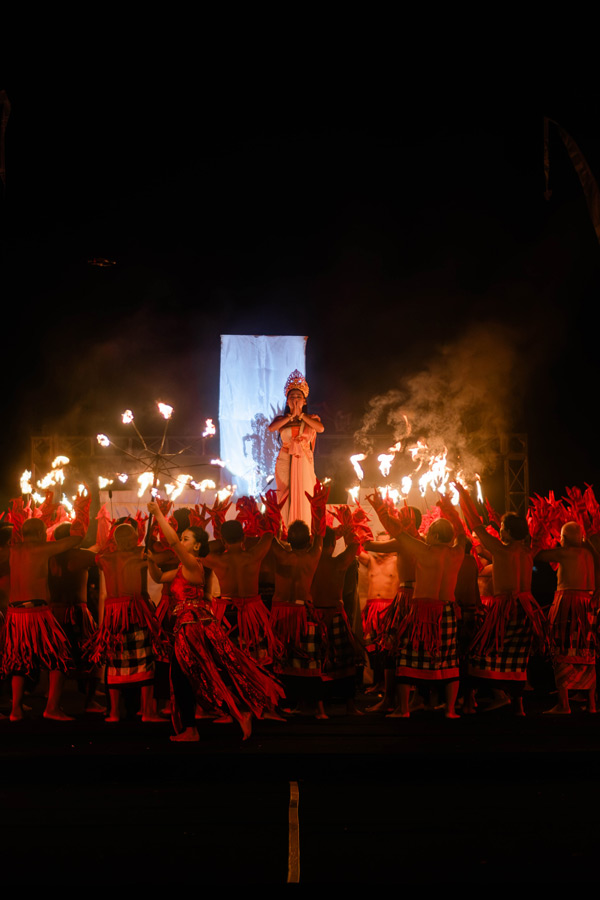
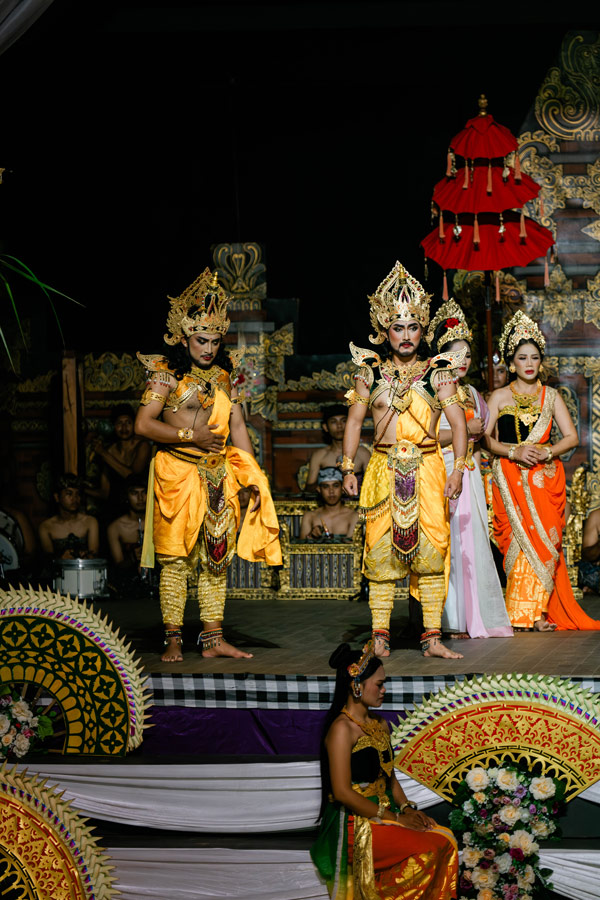
The show was based on the famous Balinese epics, the Ramayana, restored to the eight original kanda (books or sections), of its Indian original by Valmiki in the 4th century, with the corresponding narrative: Prince Rama’s exile to the forest, Sita’s enchantment by the golden deer, Rama’s pursuit of the creature, Sita’s abduction by Ravana after stepping outside her magic circle and kidnapping by Rawana, Garuda’s sacrificial attempt to save her, Rama’s alliance with the monkey king and Hanoman the hero. Hanoman’s spying mission to find Sita, still untouched, in wait for her husband to rescue her; the monkey’s construction of the Sitibanda bridge to Alengka; Rama’s assault on Alengka and killing of Rawana; and Rama’s suspicion of Sinta’s virtue leading to Sita proving her virtue by throwing herself into a pyre from which she comes out untouched.
The show was extraordinary. While the main stage of the Paripurna Art Company served as the production’s heart, a dozen family compounds in the surrounding area were transformed into living stages, each hosting a different episode of the unfolding story.
Rather than remaining seated in one place, the spectators followed the narrative as it journeyed from compound to compound, becoming participants in its movement. Each space was conjured into a world of its own: here, a glittering royal palace; there, a shadowy forest; elsewhere, a battleground of mythic struggle.
Everywhere, dances erupted like living echoes of the story, while dozens—perhaps hundreds—of shadow puppets lined the pathways, animating the journey with their spectral forms.
It was, in every sense, a wonder…
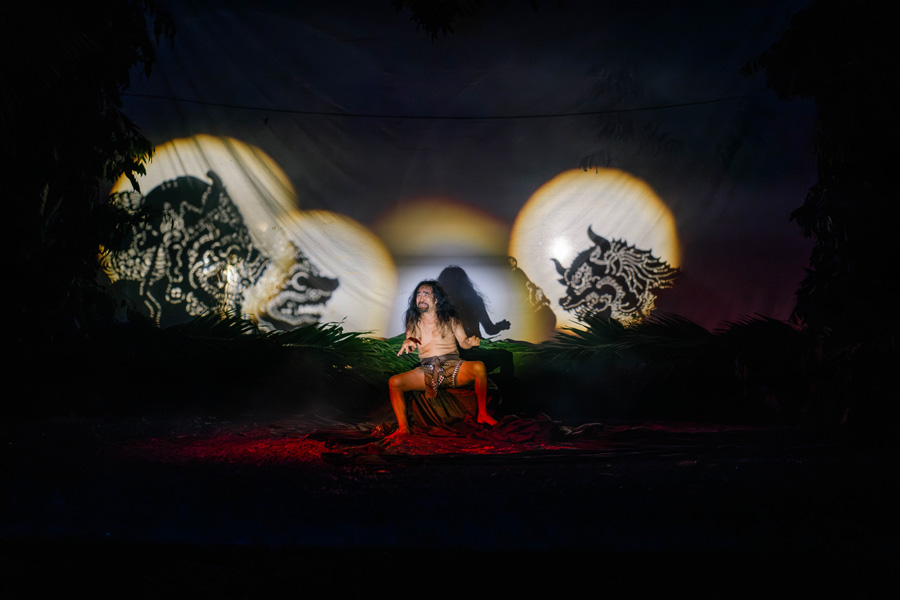
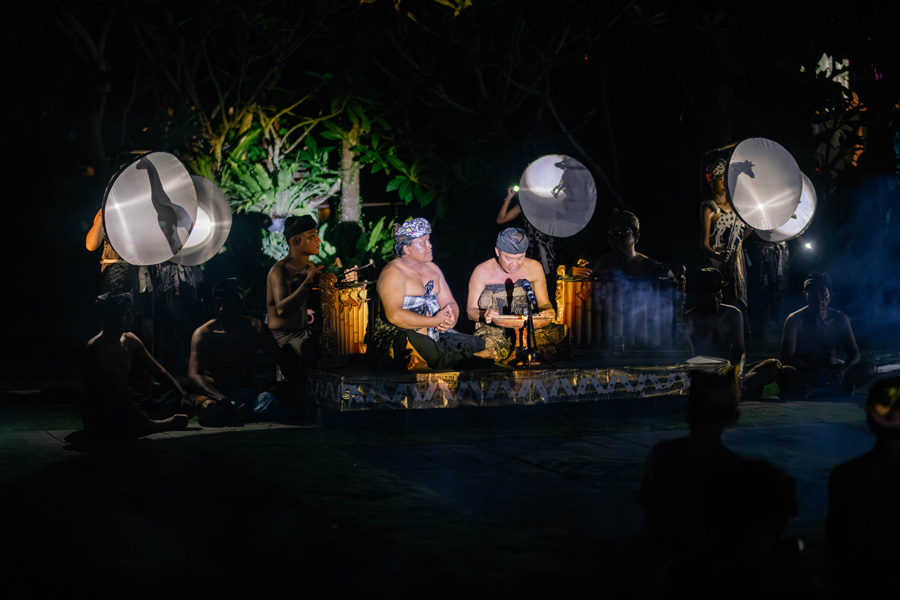
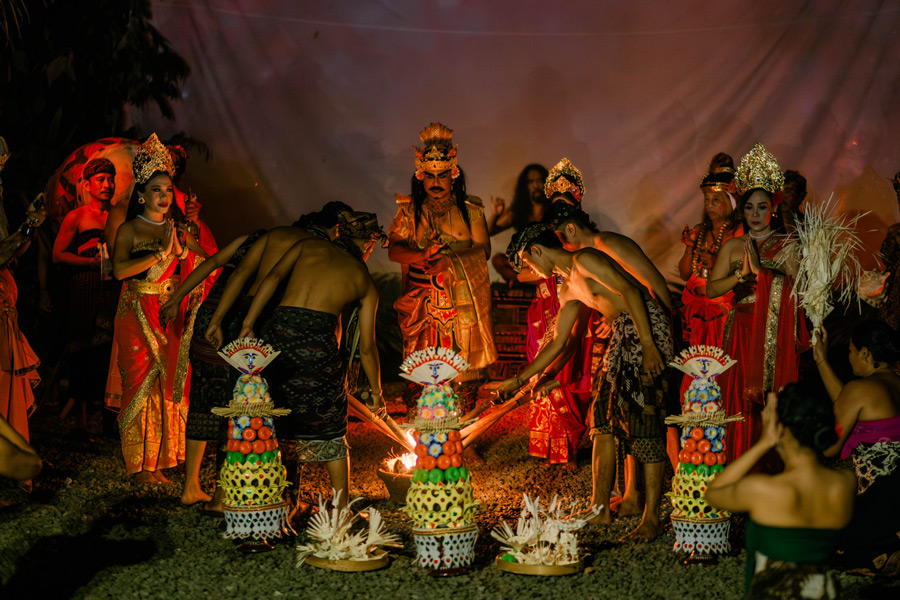
When asked about his message, what did Made Sadia say? “The Ramayana is a mythical story, of course, but it is also an open teaching book. Each of the main scenes tells us about a character trait that should be underlined or avoided: It is jealousy that caused Rama to be exiled; the golden deer in the forest is the symbol of temptation; the Garuda killed for trying to save Sita is a symbol of sacrifice. Rama is the embodiment of dharma—righteous duty—choosing to uphold moral order even at great personal cost, for example by accepting exile. Rawana (Ravana) represents the dangers of arrogance and hubris. Even though she is tempted Sita offers the image of purity, endurance, and moral resilience.”
The Ramayana is far more than a mythical adventure—it is a profound reflection on the human condition, offering timeless lessons through its characters and scenes. Each figure embodies psychological traits that invite both admiration and caution.
In this monumental achievement, Made Sidia has not merely modernised tradition. He has renewed it—fusing memory, technology, and devotion into a spectacle worthy of Bali’s living spirit.
Follow Made Sidia’s Sanggar on Instagram: @sanggarparipurna









